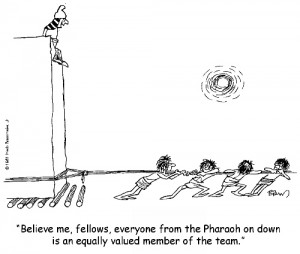The Gap Between Knowing and Doing
Yes, but what’s remarkable is that he is doing it. He is actually practicing these behaviors, while many leaders are simply talking about them.”
– Jill Klein, Melbourne Business School
I had a conversation recently with Campbell Jones, COO of a large Australian company. He had risen steadily in the organization after years of dedicated work, and was widely regarded as an excellent leader and savvy entrepreneur. So I asked him what things he did on a daily basis that contributed to the high level of engagement clearly found throughout the vibrant company.
He explained a series of consistent behaviors he was committed to. He regularly travels throughout the different operating offices in Australia and New Zealand to meet directly with the people in the company and to spend time listening to their ideas and challenges. He gives local control to people in different divisions of the organization to change or refine how they do their work and supports them with people, funding, and other resources as necessary.
Jones also explained that he intentionally has worked in many different divisions of the company, from marketing to sales to logistics and operations. This diversity of experience and the first-hand knowledge and understanding of the work enables him to relate to, and collaborate with, people in those divisions more easily. He spends as little time as possible in closed-door executive meetings, and as much time as he can working directly with employees and customers in the field.
People clearly trust him because he has demonstrated consistency of action to back up his promises, he has developed deep expertise in widely different capacities in the organization.
A few days later I met with Jill Klein, professor of marketing at Melbourne Business School, to discuss her work. Before our interview, I described Campbell Jones’ successful story to her. In my opinion his success was to be expected. After all, it was common sense that, if a leader behaves with integrity, supports and listens to the people in the organization, and supports and trusts their ingenuity of those performing the work, well… certainly excellence will emerge. In my telling of the story, I recall thinking, “But of course it works! There’s nothing remarkable about this story. Obviously a leader with these traits would drive excellence and innovation for the company.”
After listening to the story, Klein remarked, “Yes, but what’s remarkable is that he is doing it. He is actually practicing these behaviors, while many leaders are simply talking about them.”
Or as Tim Sanders likes to say, “Stay away from the ‘ings’ and spend more time with the ‘eds.’ The ‘eds’ say ‘We tried that. We tested that. We modeled that.’ The ‘ings’ say things like ‘We’re thinking about that,’ or ‘We’re discussing that.’”



